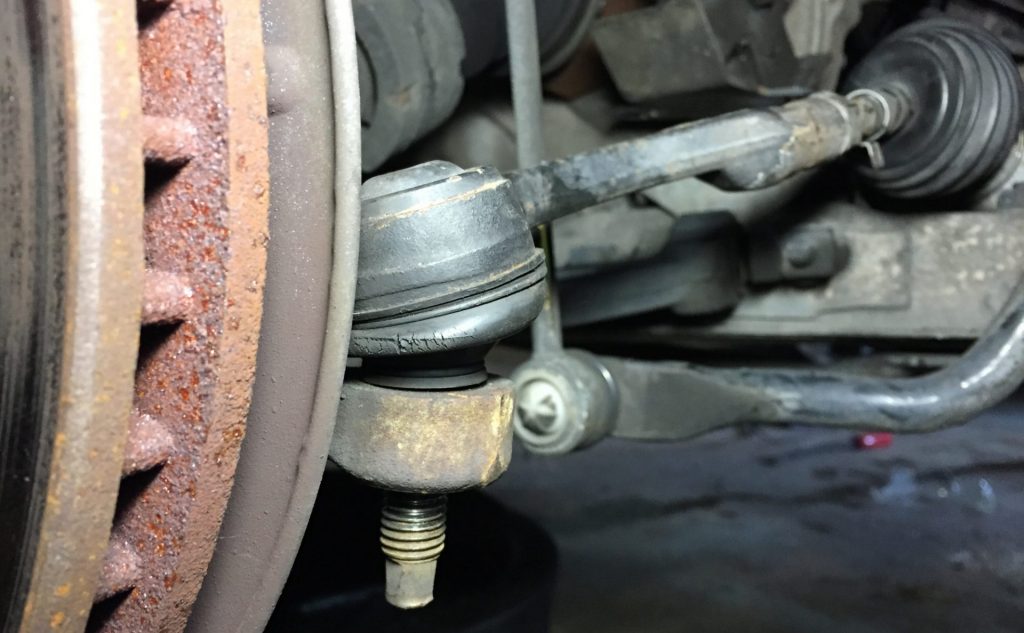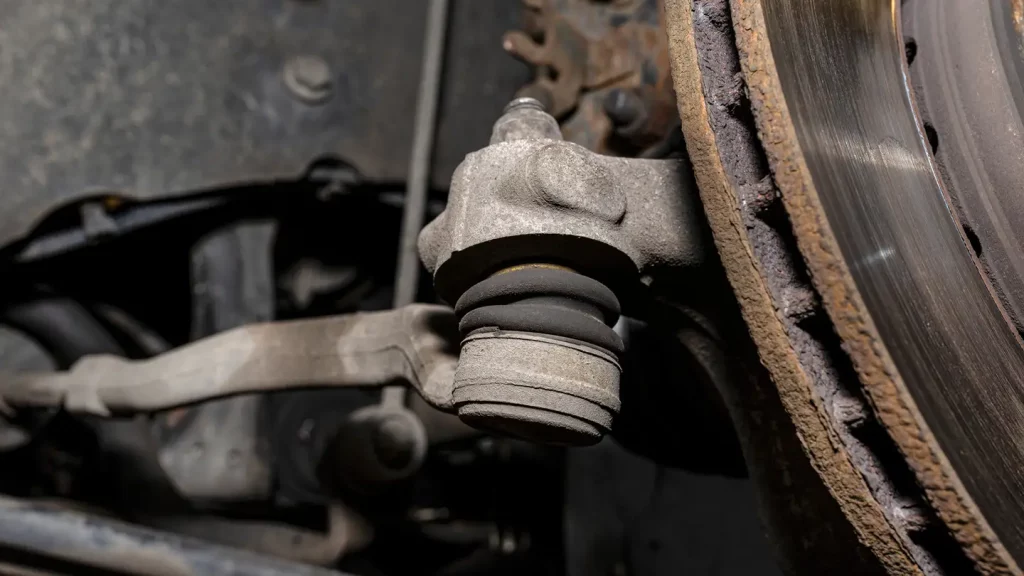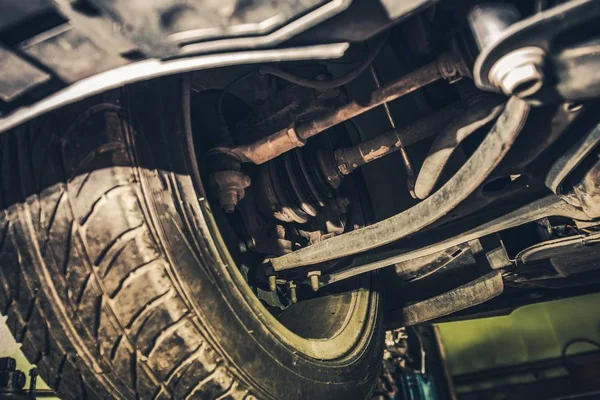When driving down the street, does your car tend to drift to one side? You may be able to stop your automobile from veering to one side when you're behind the wheel with a simple adjustment. However, your car's tie rods could be the source of your alignment problems too.
Table of Contents
If this is the case, a tie rod replacement is necessary and you must take your vehicle to a mechanic. So, how much to replace tie rods? Let's find out more about tie rods and how much it costs to replace them.
What Is A Tie Rod?
Have you ever wondered what mechanism allows you to turn your car? To keep your car's wheels in your control, your steering wheel is attached to the steering gear. Now, this steering gear is essentially connected to the "tie rods" that do precisely what their name implies – tie components together.
Wheel alignment is made possible with the use of tie rods that keep the tire's inner and outer edges aligned and prevent premature tire wear. However, without regular upkeep and timely replacements, the tie rod will wear out and eventually cause the tires and steering wheel to tremble when driving.
How Does A Tie Rod Work?
Steering systems rely on tie rods that are vital for the proper functioning of a vehicle and steering it. When you steer, tie rods allow you to move your wheels by providing a pivot point between the steering wheel, steering arm, and steering rack. So, if they are too worn out to work, it is impossible to make turns accurately.
Tie rods transmit the pressures from the central steering gears or rack and pinion to the steering arms on any vehicle, be it a passenger car or a light truck. Each side features an inner tie rod and an outer tie rod, both of which have a ball socket, providing complete freedom of movement.
The outer tie rod ends in a rack, and the pinion steering system features a tapered pin mounted to the steering arm. Moreover, cast iron and machined internal threads allow the inner tie rod to be inserted into the outer tie rod.
Both tie rods are threaded into one another to align the front wheels. Another threaded end fastens into the steering rack assembly on the ball-socket side of the inner tie rod's opposite end.
How Long Do Tie Rods Last?
It is common for tie rods to last for many years. In fact, you might never have to change them at all. In reality, how long your tie rods last is directly related to how you drive.
Specific driving conditions might have an impact on the life expectancy of a vehicle. Even minor incidents or road conditions like potholes can cause tie rods to malfunction. Some people recommend inspecting the tie rods regularly because of their significance and frequency of use.
Having your tie rods tested on a routine basis will give you a heads-up if they're showing indications of wear and tear. If they're worn out, you should have your car's right and left tie rods changed at the same time. Be sure you also get a wheel alignment after that.
To determine whether your tie rods need to be replaced, mechanics can do a few simple inspections to check if there's any excessive movement. You should have your vehicle's tie rods checked out for any unusual impact with the front wheels (such as running into a curb) or any harsh road conditions.

How Do Tie Rods Break?
Wear and tear from driving on rough terrain can cause tie rods to break down prematurely. The absence of lubrication is a common cause of failure. Tie rod ends can be damaged by road hazards such as potholes, bumps in the road, or hitting the curb too hard.
Moreover, lubrication can seep out of the tie rods, so the ends might become loose and bind up, making driving dangerous.
How To Tell If Your Tie Rods Are Bad?
If you notice any of the following bad tie rod symptoms, it's time to take your vehicle to a professional for a replacement.
Unsteady Controls
If you notice shakiness in the steering wheel, you may have a broken or bad tie rod. It happens to be caused when the steering wheel loses control over the tires, leading the vehicle to become unsteady. A loose or non-responsive steering wheel may be to blame. When attempting to turn the wheel, you may observe this more clearly.
Vibrations In A Moving Automobile
Another indicator of a broken or failing tie rod is a car that vibrates. Tires will start moving erratically and produce considerable shaking when the control of the steering wheel over the wheels is lost. When you accelerate, decelerate, or make turns, you become more aware of the vibrations.
Tires Wear
The wear patterns of your tires can be affected if your tie rods are worn or loose for a long period. Your tires will "toe-out" if your vehicle's tie-rods are worn, loose, or failing. Using these damaged tires may cause the treads on the inside of the tires to wear down more quickly over time. Your car's alignment is greatly influenced by tie rods, not the other way around.
Bad Alignment Or Car Pulls
You may have a problem with your tie rods if you notice your vehicle pulling or drifting to one side. Poorly functioning tie rods can mess up a vehicle's alignment. With old, loose, or failed tie-rods, alignments are impossible.

How Much Does Tie Rod Replacement Cost?
The tie rod replacement cost depends on the make and model of your automobile, the repair you use, and where you live.
Here's a more accurate look at estimates for tie rod replacement on vehicles:
2006 Chevrolet Silverado 1500
An inner tie rod replacement on a 2006 Chevrolet Silverado 1500 takes about an hour of labor. The cost of a tie rod is roughly $34, and other parts cost about $35. The overall service cost for an exterior joint repair is approximately $95.
2006 Mazda 3
An inner tie rod replacement on a 2006 Mazda 3 can take 3 hours of labor time or more.
There is a difference in price between a Proforged replacement part and a factory replacement part. With a factory part, the total cost is $375, and with an aftermarket part, it is $319.
2010 Ford Fusion
An inner tie rod replacement on a 2010 Ford Fusion takes about 3 hours and may also involve the removal of the steering rack. Aftermarket parts can cost up to $40 to replace, bringing the total cost of the job around $350 or $330, depending on which option is used.
This vehicle model's outer tie rod end replacement takes about half an hour of effort. A Delphi replacement part costs around 29 cents less than a $60 factory item. Utilizing a factory part will cost you $120, whereas using an alternative part will run you around $69 total.
2007 BMW
A 2007 BMW 328i's inner tie rod replacement takes about 4 hours of labor time, along with the removal of the steering rack. A replacement inner tie rod end usually costs around $36 less than a factory item.
To get the repair done for $610 using a manufacturer part and $430 using an alternative part, the total cost is $609. 0.4 hours of labor is required to replace an outer tie rod. Replacement of outer tie rod end costs roughly $22 compared to a $125 OEM part. To finish the job, a factory part costs $165, while an aftermarket part costs $62.
How Much For A Tie Rod Replacement?
As we've said before, driving a car with a faulty tie rod is a bad idea. Doing so could expose you and other people to danger. You shouldn't rush into replacing a tie rod if you don't believe it's necessary.
Are you wondering whether tie rods are expensive to fix? Well, that depends on your vehicle. However, replacing them at the early stage of damage can prevent you from a more costly repair to your car. The part itself might not be as expensive as people think, but labor will run your bill quite high. So, if you notice any bad tie rod symptoms in your vehicle, go to your nearest car repair shop and get your vehicle checked and tie rods replaced before it's too late.

